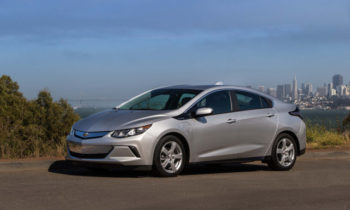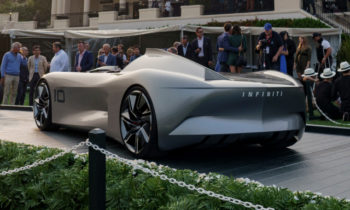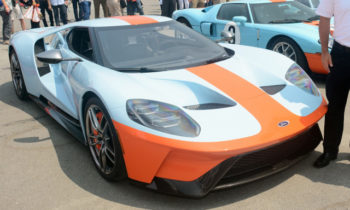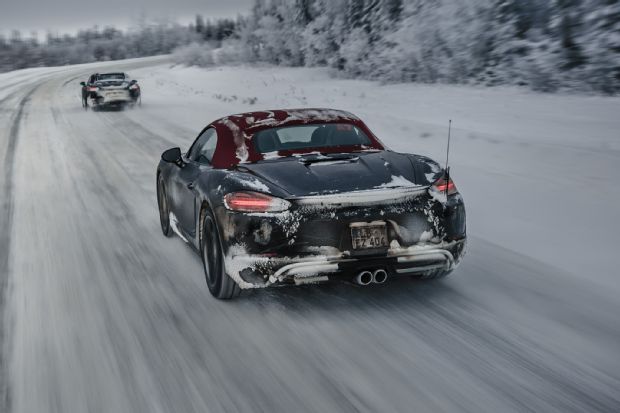
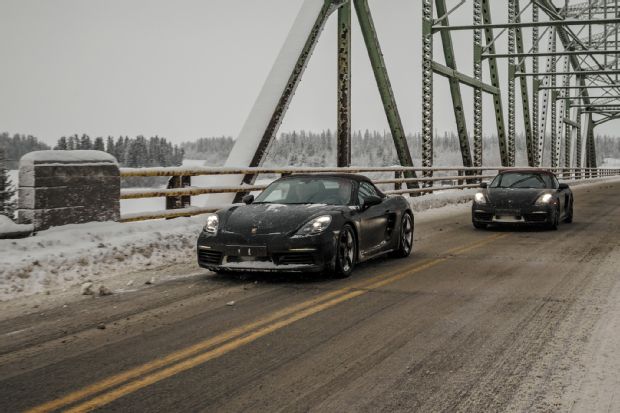
We traveled to Canada to zoom in on Porsche’s new 718 series models, which come to market next April as the 718 Boxster and six months later as the 718 Cayman. (The 718 moniker was inspired by the mid-engine lightweight street-legal racer and serial trophy winner produced between roughly 1957 and 1964.) Additionally, the coupe and roadster are about to swap positions, with the convertible now set to be priced a couple grand above the hardtop model, which was significantly more expensive when it first launched as the Cayman back in 2005.
“We were facing a complex task,” project leader Jan Roth tells us. “Marketing wanted to move the mid-engined twins further away from the rear-engined 911. The dedicated means to this end is the new four-cylinder boxer. Why not a smaller displacement flat-six? Because now that we are introducing turbocharging across the board, it would have been impossible to package the bigger powerplant. Believe me — it was difficult enough to find space for the flat-four and for the related extra intake and exhaust plumbing, not to mention the complex intercooler assembly. For these reasons alone, the six was never on our radar.”
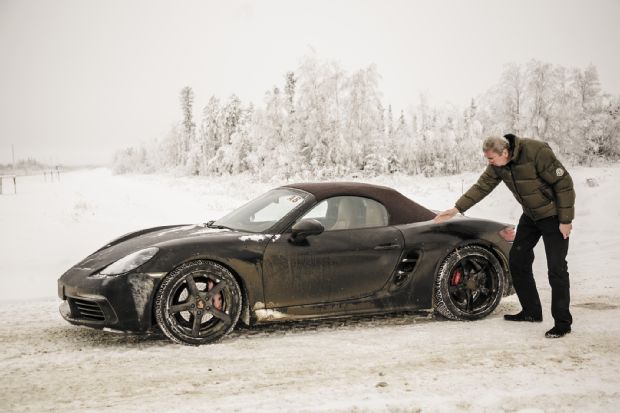
Leafing through the Porsche annals, we found five models equipped with four-pot boxer engines: 718, 904, 356, 912 and 914. While the history books list various iterations of that Beetle-inspired, air-cooled and carb-fed flat-four, the unit codenamed EA9A2 is an all-new, direct-injection variable-vane turbo 16-valver. Initially, there will be two versions, a 2.0-liter with roughly 300 horsepower and 266 lb-ft of torque for base versions and a 2.5-liter with some 340 horsepower and 295 lb-ft powering the S models. Mid-term, an even brawnier GTS variant good for at least 365 horsepower is due to complete the range. And yes, there is still plenty of room for a higher spec model or even a naturally aspirated six if Porsche wants to go there.
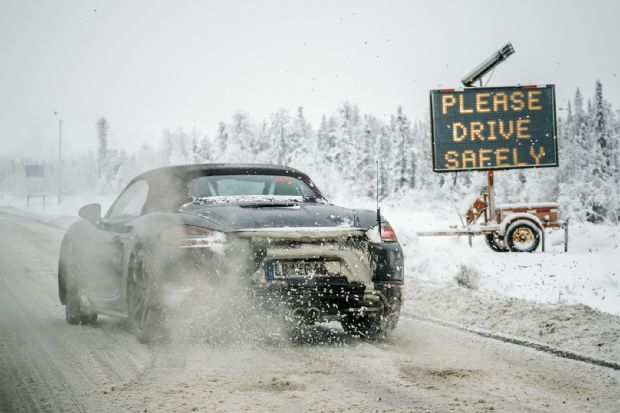
“Downsizing offers various advantages,” says Matthias Hofstetter, who oversees Porsche’s sports car drivetrain development. “For a start, the turbocharged four-cylinder produces up to 100 newton meters [74 lb-ft] more torque than the outgoing six. At the same time, it is instrumental for reducing the average fuel consumption by 15 percent.”
The improved performance numbers offer further proof. While the 2.5-liter-equipped Boxster S will reportedly accelerate from 0-60 mph in roughly 4.7 seconds on to a top speed of 174 mph (on par with the present model), the base model is only half a second slower off the mark and falls a mere 6 mph short in maximum speed. Permanently dark-voiced and with a growling baritone at higher revs, the 2.5-liter engine narrowly loses the street musician duel to the smaller displacement unit, which sounds aggressively high-tech — especially when combined with the optional sports exhaust.
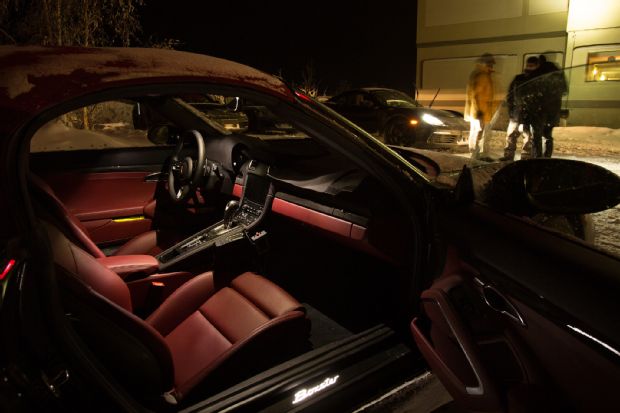
Even when Grandmaster Drift Ernst himself is tap-dancing on the pedals like Fred Astaire, we find it impossible in these conditions to decipher a difference in outright poke and absolute torque. From a purely subjective point of view, the 2.0-liter engine feels fractionally more agile and spontaneous, the response to tip-in and tip-out inputs bordering on restlessness. Despite the extra 500cc, the bigger unit does not seem to obey throttle orders quite as promptly. In the wake of that brief initial — dare we say — turbo lag, however, oomph builds up more rapidly and climbs to a taller peak.
The Sport Chrono pack is all it takes to make those detours to dynamicland more exciting. One push at the black Sport Response Button (SRB) in the middle of the rotary control attached to the steering wheel kicks all systems into Sport Plus mode for up to 20 seconds. Simultaneously, the PDK transmission allows later upshifts at higher revs. No revolution, but a nice new feature.
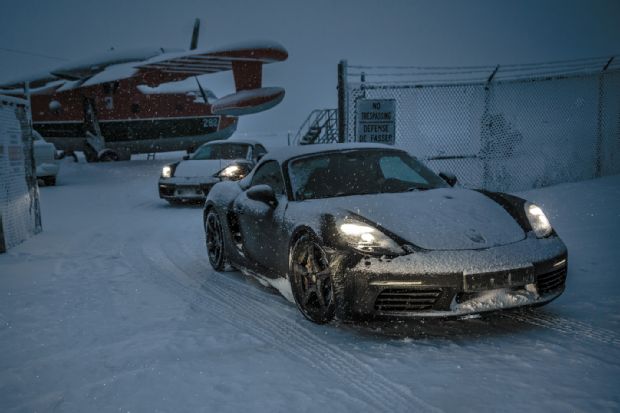
“Today, normally aspirated and turbocharged engines still live side by side,” states engineer Hofstetter. “In the future, however, the turbo is going to pull away big time. It does not only radically replot the torque curve, it also is an essential CO2-reducing tool.” So, if your loyalty to the flat-six is cast in concrete, better grab a late model Boxster/Cayman quick. That, or trade up to the 911, although outside of special-edition models its flat-six now comes in turbocharged form as well.
The internal designation 981 indicates that the 718 models are more new car than routine face-lift. This is good news, except that even brand fetishists must look twice to decipher the outward facing changes. In the cabin, Porsche developed a new instrument panel for both models, mainly to get rid of the noisy yet relatively breathless old air vents. As far as the exterior goes, R&D chose to redesign all sheetmetal and composite parts bar the rear trunklid. The sole eye-catching novelties are the restyled LED head- and taillamps: four bright dots per unit, plus a set of horizontal light bars operating indicators and rear lights.
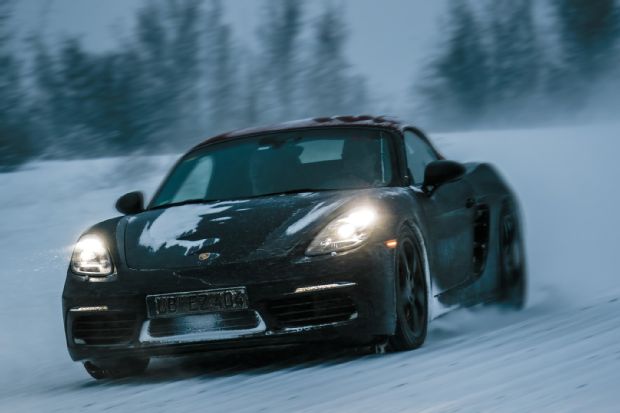
“More than anything else we aimed at improving the overall drivability,” states Joachim Meyer, senior chassis engineer of the sports car division. “At the end of the day, it´s often the little things which add up to a tangible step forward. I´m thinking of minor changes like half an inch wider rear wheels, a new rubber compound providing more tire grip, mildly tweaked suspension kinematics, and the more sensitive ABS, ASR, and PSM software.”
From the passenger’s point of view at least, compliance and stability seem more confidence-inspiring than ever. Even when plowing through 5 inches of fluffy powder, straddling icy longitudinal grooves, and crossing islands of packed snow, the car remains communicative and controllable. Although some surfaces have the friction coefficient of a banana skin, the amazing winter Michelins, attentive suspension, and astute electronic helpers bring about a surprise-free balance.
Manual transmission or PDK? The progressive clutch, with its eager throttle and the slick gear lever, meet the expectations of the driver’s left foot and right arm with aplomb. But this is Canada in mid-winter, and on snow the dual-clutch PDK box would be our preferred option. After all, it allows you to keep both hands on the steering wheel at all times, and the quick paddle-induced gear changes don´t dent the flow nearly as conspicuously as manual upshifts. The characteristics of drivetrain and suspension may, in combination with the Sport Chrono pack, be adjusted via a rotary control knob attached to the steering wheel. There are four settings on offer: zero indicates Comfort, Sport alerts all six senses, Sport Plus is a hyper-nervous track-only program, and Individual invites you to compile personal favorites. Unlike most rivals, Porsche wisely refuses to include the steering action in this drive-mode Scrabble.
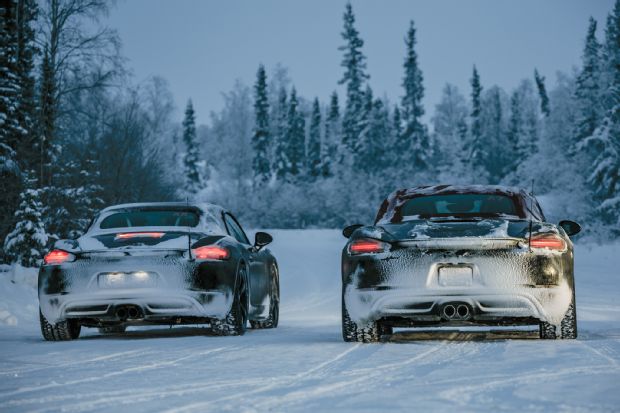
Ernst keeps unearthing secluded byways where the test drivers are invited to give ’em stick until colonies of arctic hares line up along the road and applaud. Our group is a mixed bunch of 20 engineers from all faculties, two mechanics, plus more than 1,500 pounds of spare parts packed in a Ford Expedition chase car, and a minivan acting as rolling pantry. The weekly curriculum typically consists of seven 10-hour stints at up to 430 miles per stage. Backup work on the laptop and in temporarily booked garages counts extra. Some Porsche R&D pros have been returning to the frozen badlands for 15 years in a row and by now know every bison by its Christian name. Those who are new to the routine must sooner or later brace themselves for undisclosed rounds of mystery drinks.
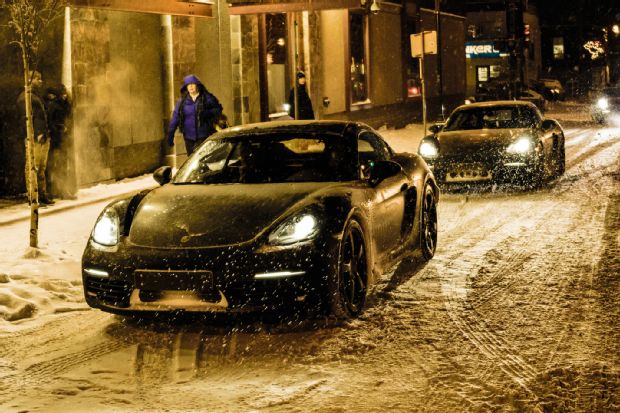
The Canadian Mounties more often than not play the role of friendly observer up here in the frozen north and can be forgiving should a Porsche mule suddenly mistake Mackenzie Highway for the autobahn. But those are the types of shenanigans normally reserved for the area’s not-yet-frozen lakes. “Triple figure stints on public roads are a no-go,” says Ernst. “When we feel like playing, the fleet retreats to a frozen lake, the winch-equipped Expedition hot on our heels.”

